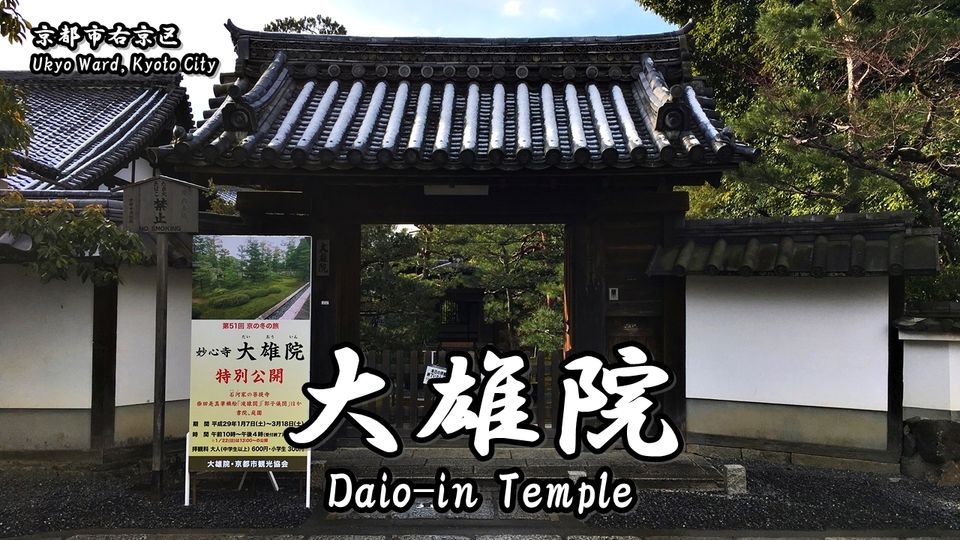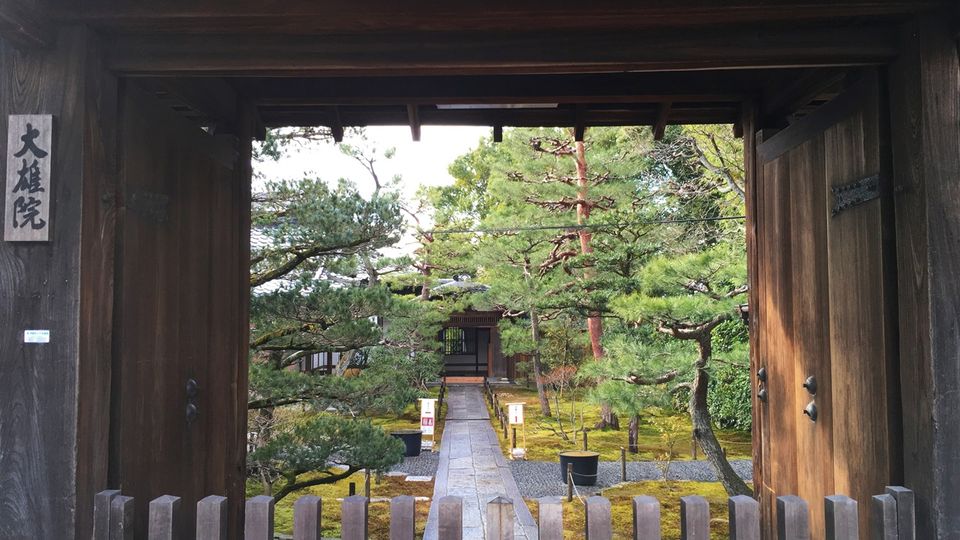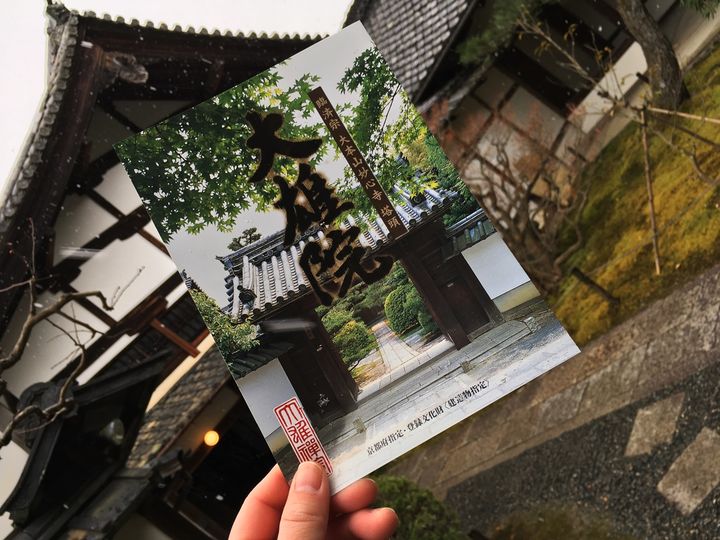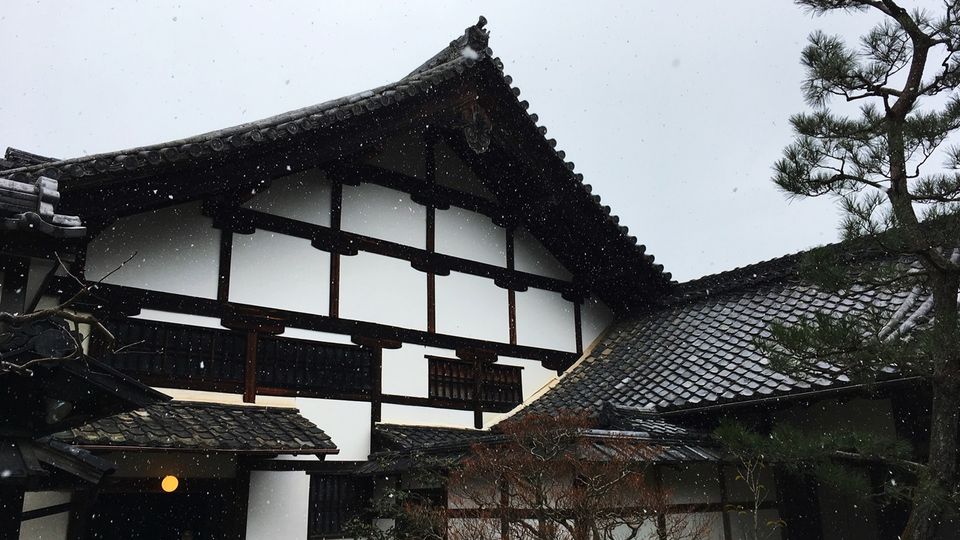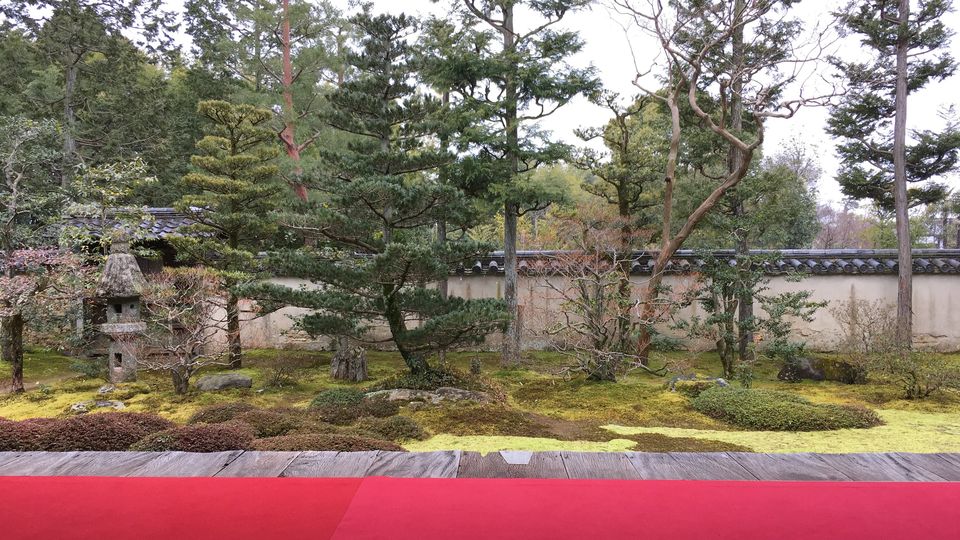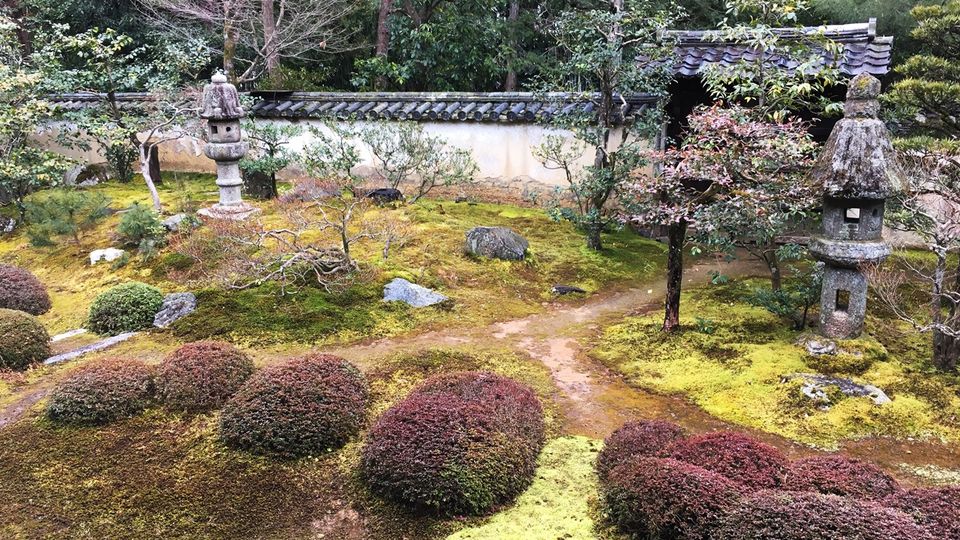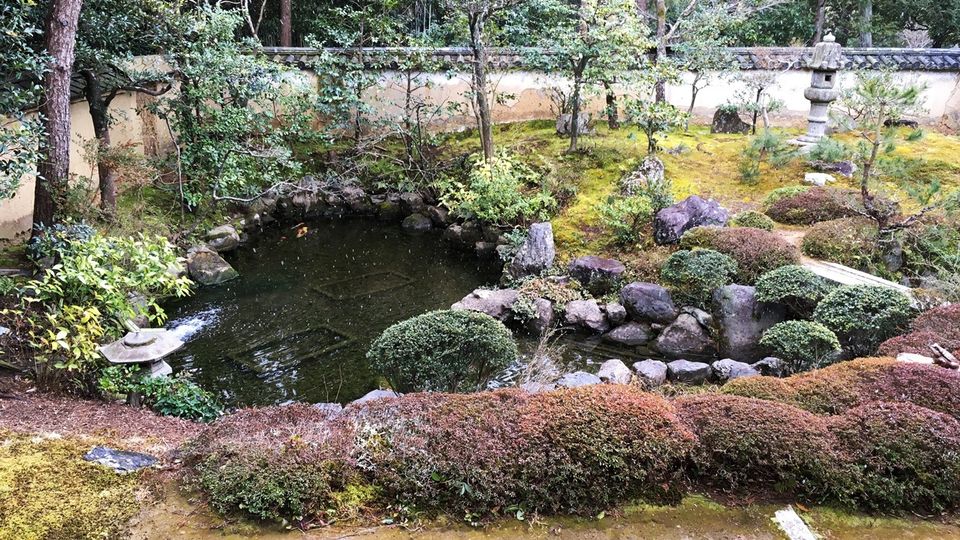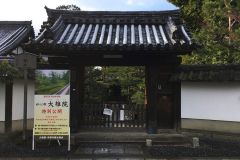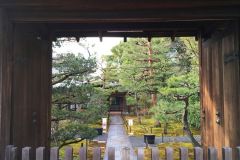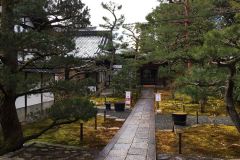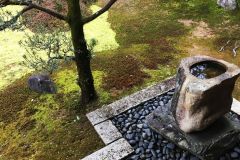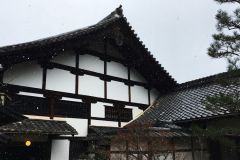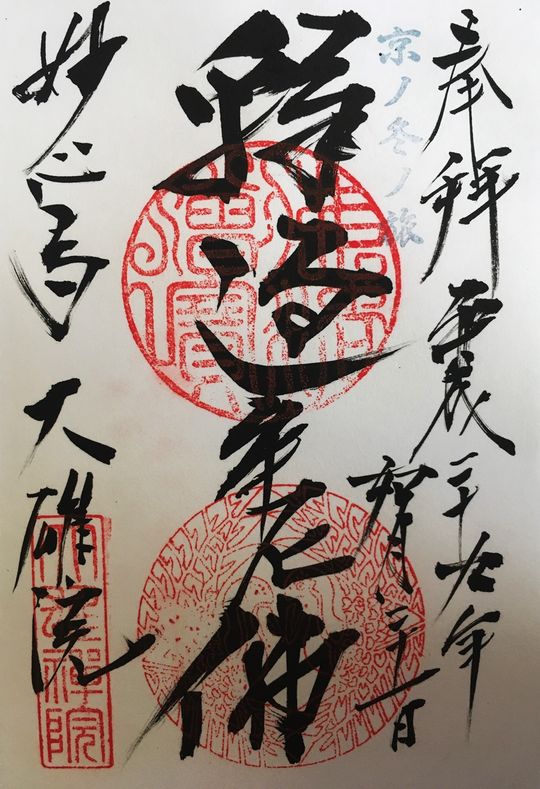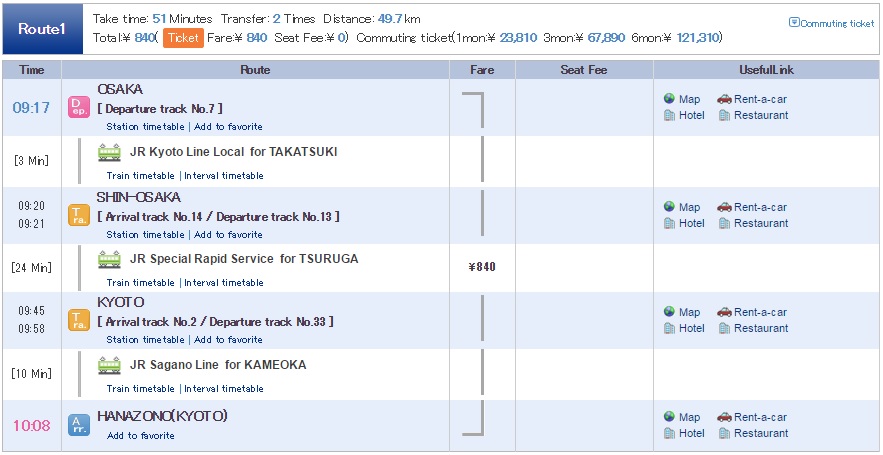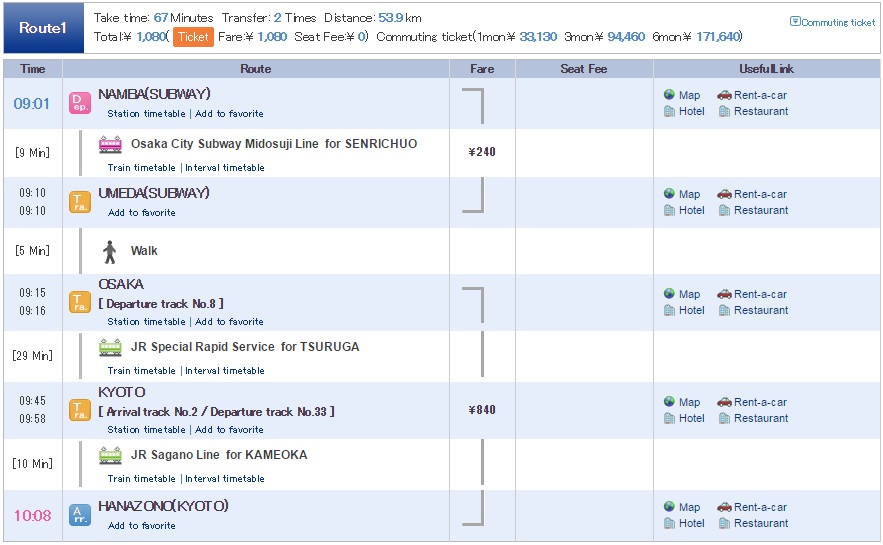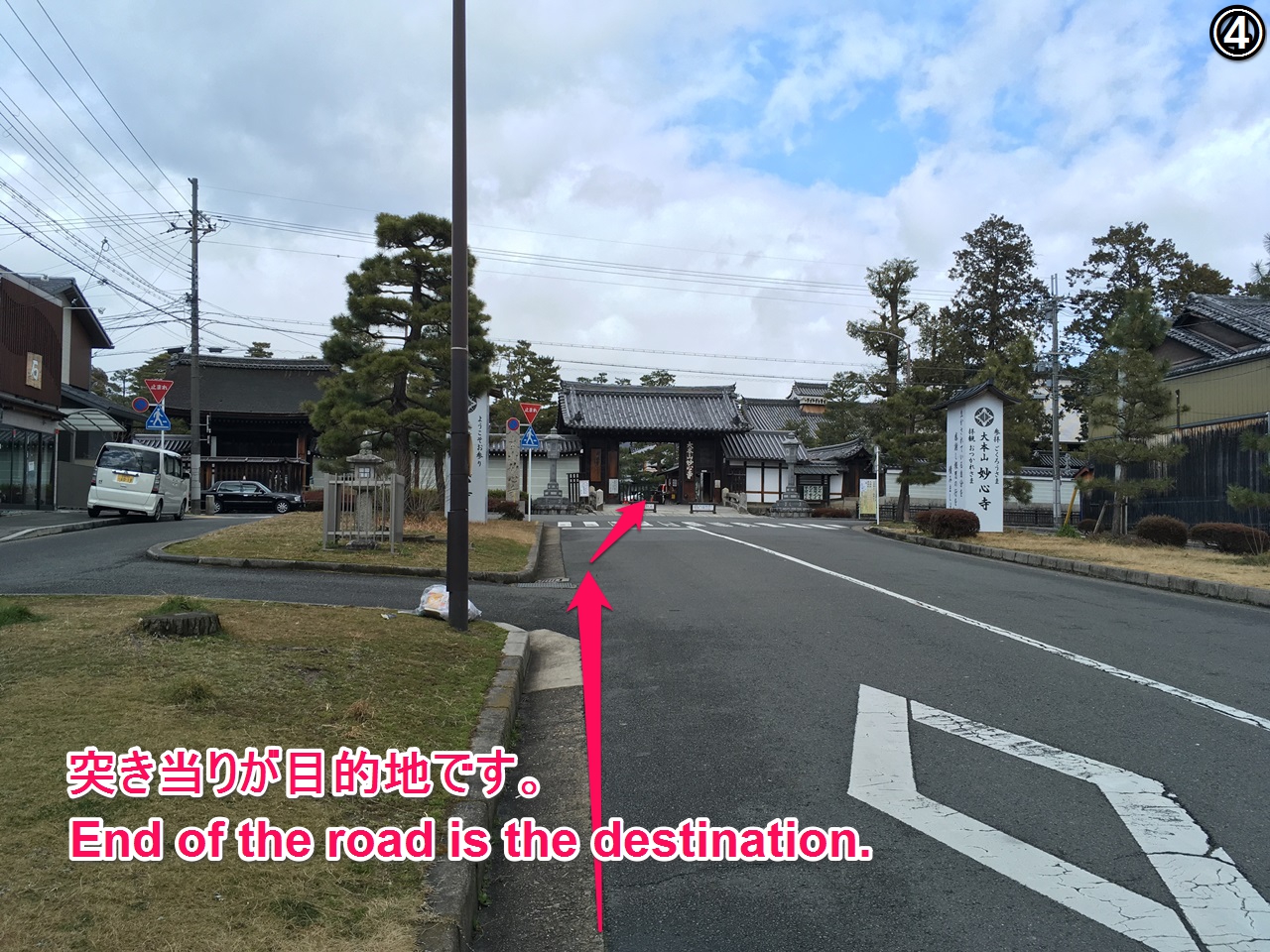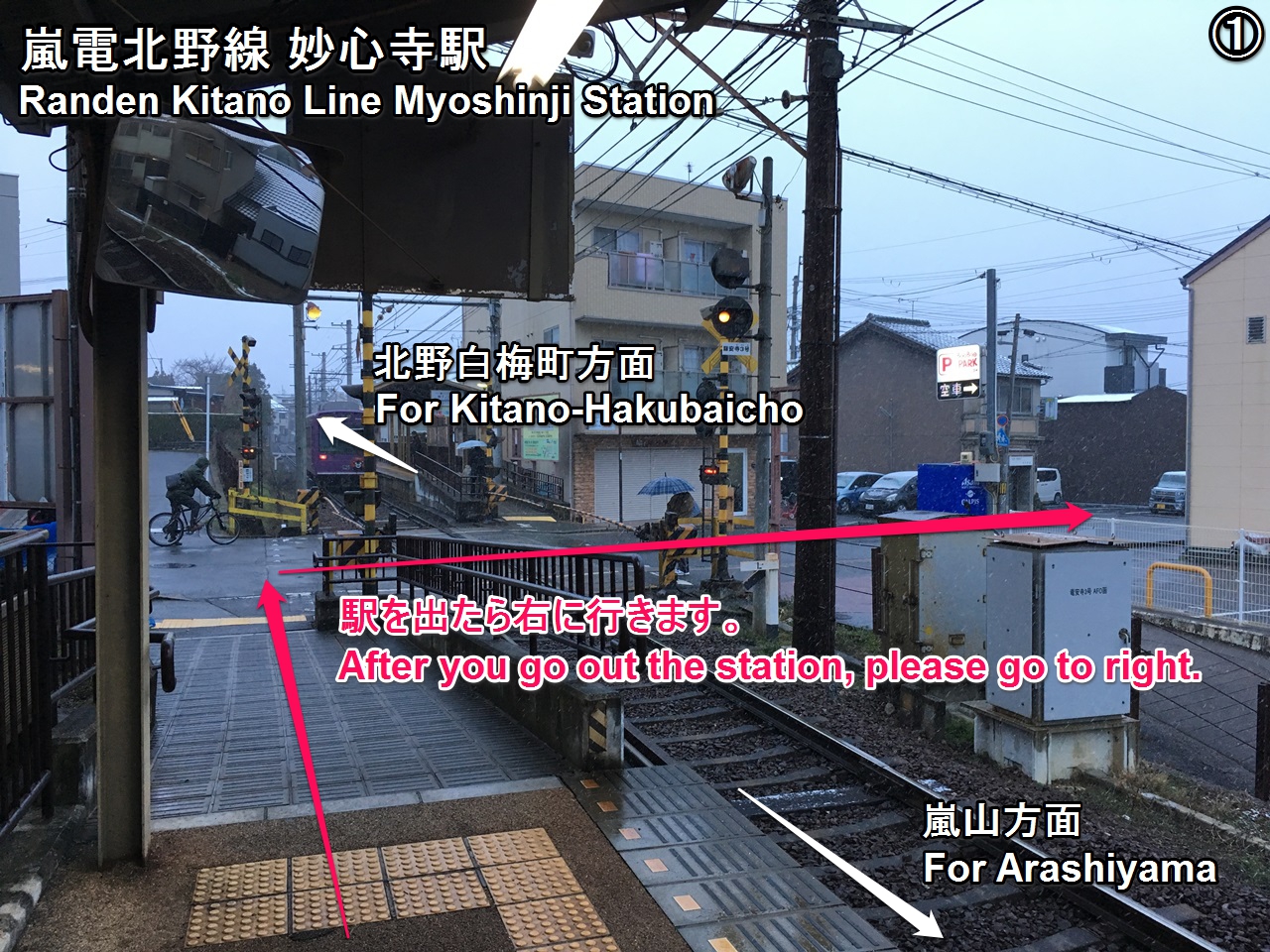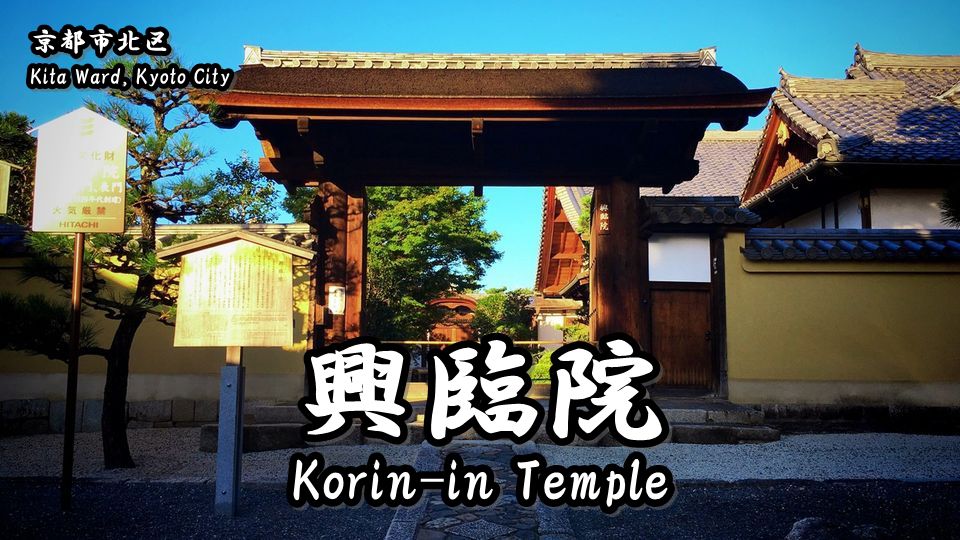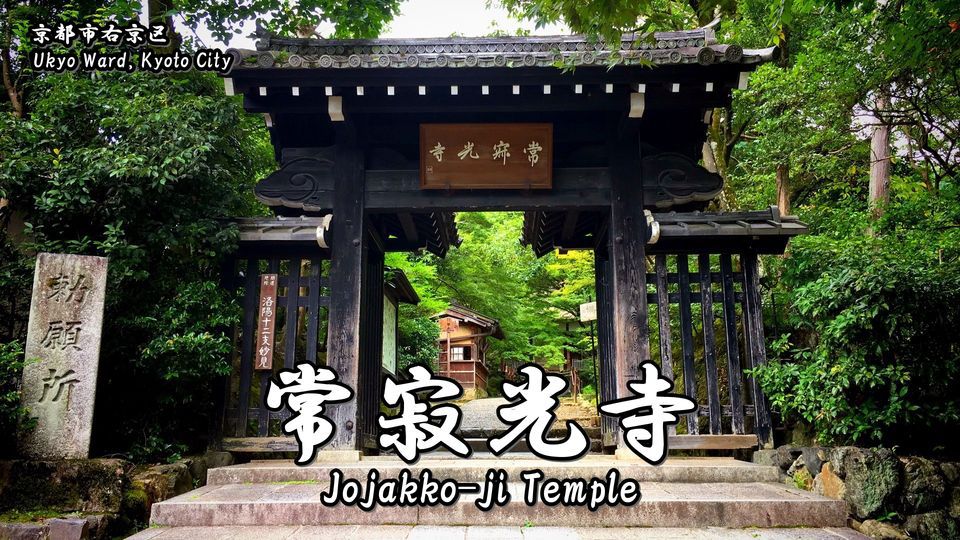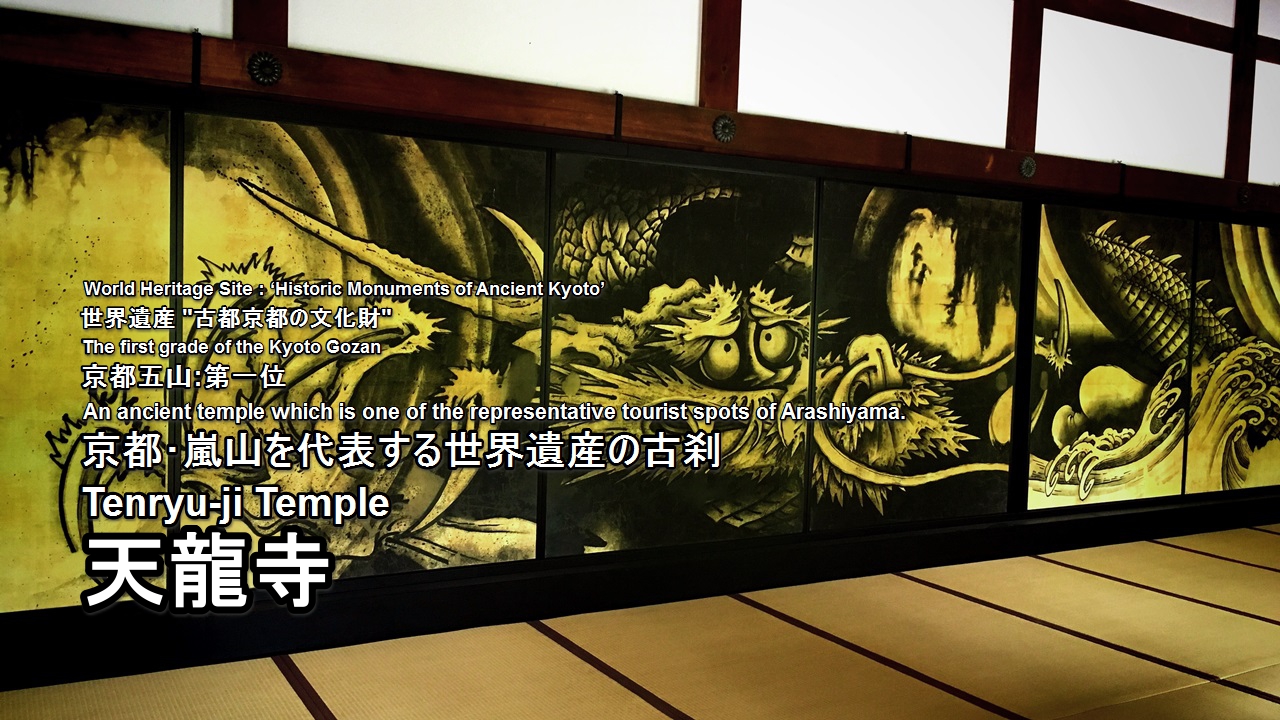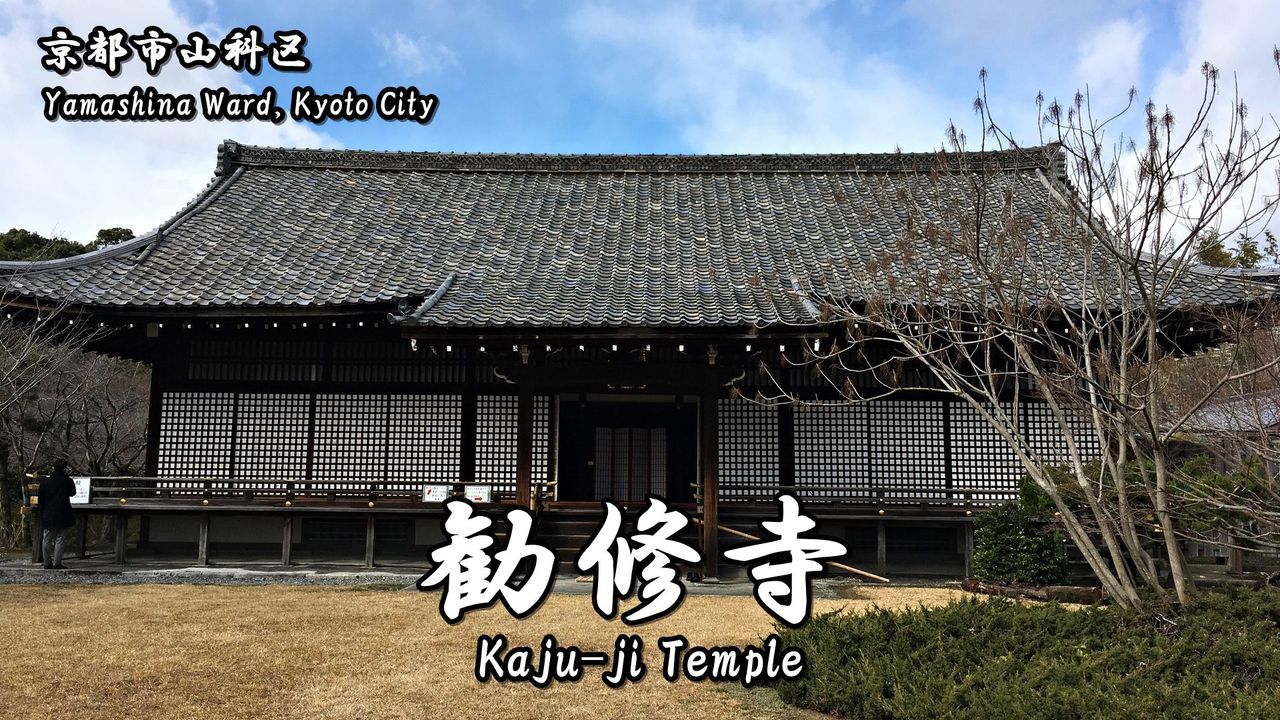Daio-in (大雄院) is one of the sub-temples (塔頭:tatchu) of Myoshin-ji (妙心寺) which is located in Hanazono, Ukyo Ward, Kyoto City.
Myoshin-ji is the biggest Zen temple in Japan, and it has a total of 48 sub-temples.
Daio-in is also one of these sub-temples.
Among those sub-temples, only Keishun-in, Taizo-in, and Daishin-in are open to the public on a regular basis.
Daio-in is only open to the public on specific days.
So, if you want to visit this temple during other periods, let’s make a reservation beforehand or participate in Zen meditation party (every 1st and 3rd Saturday).
Highlight of this temple is a fusuma paintings which was drawn by Zeshin SHIBATA (柴田是真).
History of Daio-in
Let’s study the history of this sub-temple with me before introducing of Daio-in (大雄院).
I think that we can enjoy the sightseeing of this sub-temple more by learning the history of it. XD
Daio-in was founded in 1603 of the Edo period by Mitsutada ISHIKAWA (石川光忠) who was a busho (a Japanese military commander) of the Owari Domain (尾張藩).
When the foundation of this temple, he invited Genjo KEINAN (慧南玄譲) who was the chief priest of Myoshin-ji as founding priest.
Originally the ISHIKAWA clan (石川家) was a daimyo of the Mino Province (美濃国).
Mitsumoto ISHIKAWA (石川光元) who was his father died soon after Mitsutada was born.
So, Mitsutada succeeded the ISHIKAWA clan when he was only 9 years old and founded Daio-in to pray for the repose of his father’s soul.
About Daio-in
It is only open to the public on specific days (not fixed).
Special admission information (Japanese text only)
Information
Address:52, Hanazono Myoshinjicho, Ukyo-ku Kyoto-shi, Kyoto, 616-8035, Japan
Phone number:+81-75-463-6538
Foundation:1603
Founder:Mitsutada ISHIKAWA (石川光忠)
Sect:Rinzai sect Myoshin-ji School (臨済宗妙心寺派)
Principal image:Shakamuni-butsu (釈迦牟尼仏)
Open
10:00~16:00
Admission Fee
| Junior high students or older | 600 yen |
| Elementary students or younger | 300 yen |
Other information
・Please ask temple’s staff where you can take photos and videos.
・Worship method of a shinto shrine and a buddhist temple, please refer to the following article.
Next, Let’s go to see highlights of this temple with me!
Highlights of Daio-in
This mark ‘*‘ is a pay area.
表門:Omote-mon (gate)
Omote-mon (gate) has the role as a entrance of this temple.
It was built in 1603 of the Edo period and is the oldest structure in this temple.
It has been designated as a tangible cultural properties designated by Kyoto Prefecture.
庫裏*:Kuri*
Kuri has been designated as a tangible cultural properties designated by Kyoto Prefecture.
It has the role as a priest’s living quarters or the kitchen of a temple.
客殿・書院*:Kyaku-den / Shoin*
Kyaku-den and Shoin were both rebuilt in 1726 of the Edo period.
When you enter at the entrance, front side building is Kyaku-den, and rear side building is Shoin.
Both buildings have been designated as a tangible cultural properties designated by Kyoto Prefecture.
Fusuma picture which was drawn by Zeshin SHIBATA who is a Makieshi (gold lacquer master) succeeded from the late Edo period to the early Meiji period is displayed in the Kyaku-den.
In addition, ‘Sansui-zu (picture of landscape on fusuma)’ which was drawn by Zaimi TOKI (土岐済美) who is a painter succeeded from the late Edo period is displayed in the Shoin.
庭園*:Garden*
There is a Japanese garden in the south side of Kyaku-den.
It is one of the Karesansui garden (Japanese rock garden).
There are three lanterns which have different shapes each other in this garden.
Backside of the garden is Chisen Kaiyu style garden (a style of Japanese garden with a path around a central pond and spring).
Photos of Daio-in
Goshuin (red ink stamp) of Daio-in
Goshuin of this temple is “Shakamuni-butsu (釈迦牟尼仏)” which is the principal image of this temple.
We can get it in the reception desk of the entrance. (300 yen)
How to get to Daio-in
Daio-in is in the precincts of the Myoshin-ji.
Nearest station is JR Hanazono Station or Randen Kitano Line Myoshin-ji Station.
We can also go by bus from ‘JR Kyoto Station’, ‘Hankyu Kawaramachi Station’, and ‘Keihan Gion-Shijo Station’.
From Osaka Sta. to Hanazono Sta. (by train)
Timetable and Route Search (train)
1.Get on the JR Kyoto Line from Osaka Station to Kyoto Station and change to the JR Sagano Line.
2.Get on the JR Sagano Line from Kyoto Station to Hanazono Station.
From Namba Sta. to Hanazono Sta. (by train)
Timetable and Route Search (train)
1.Get on the Osaka Metro Midosuji-Line from Namba Station to Umeda Station and change to the JR Kyoto Line.
2.Get on the JR Kyoto Line from Osaka Station to Kyoto Station and change to the JR Sagano Line.
3.Get on the JR Sagano Line from Kyoto Station to Hanazono Station.
From Kyoto Sta. to Hanazono Sta. (by train)
Timetable and Route Search (train)
1.Get on the JR Sagano Line from Kyoto Station to Hanazono Station.
From JR Hanazono Station (on foot)
It’s about 6 minutes (400m) on foot.
From Myoshinji Station (on foot)
It’s about 5 minutes (300m) on foot.
Get on a bus from JR Kyoto Station
Timetable and Route Search (bus)
Please get on a Kyoto City Bus No.26 (Kyoto Sta.[D3]) and get off Myoshinji Kitamon-mae (Myoshinji Temple).
Bus company:Kyoto City Bus
Routes/Destination:26/Bound for Omuro Ninnaji Temple
Boarding bus stop:Kyoto Sta.[D3]
Alighting bus stop:Myoshinji Kitamon-mae (Myoshinji Temple)
Bus fare:230 yen
Get on a bus from Kyoto Kawaramachi Station
Timetable and Route Search (bus)
Please get on a Kyoto City Bus No.10 (Shijo Kawaramachi [A]) and get off Myoshinji Kitamon-mae (Myoshinji Temple).
Bus company:Kyoto City Bus
Routes/Destination:10/Bound for Kitano-tenmangu Shrine
Boarding bus stop:Shijo Kawaramachi [A]
Alighting bus stop:Myoshinji Kitamon-mae (Myoshinji Temple)
Bus fare:230 yen
Time required:About 43 min
Get on a bus from Gion-Shijo Station
Timetable and Route Search (bus)
Please get on a Kyoto City Bus No.10 (Shijo Keihan-mae [C]) and get off Myoshinji Kitamon-mae (Myoshinji Temple).
Bus company:Kyoto City Bus
Routes/Destination:10/Bound for Kitano-tenmangu Shrine
Boarding bus stop:Shijo Keihan-mae [C]
Alighting bus stop:Myoshinji Kitamon-mae (Myoshinji Temple)
Bus fare:230 yen
Time required:About 40 min
Take a taxi
From Kyoto Station:about 3,000 yen (20 minutes)
From Gion-Shijo Station:about 2,800 yen (15 minutes)
・Let’s show a taxi driver the following phrase.
・If you want to call a taxi, let’s show the following phrase.
Phone number of taxi dispatch (Kyoto Station)
Hotel search & reservation around Daio-in
How did you like it?
Have a nice trip!

